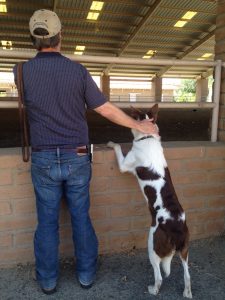Golden Retriever Regains Her Mobility After Stem Cell Therapy
 This week’s blog is about a golden retriever named Harley. Harley, like many golden retrievers, had arthritis and was living a restricted lifestyle. Harley was treated two years ago with VetStem Cell Therapy and had great results. Many dog owners think that traditional arthritis medications such as nonsteroidal anti-inflammatory drugs (NSAIDs) or other pain medications are the only treatment available for canine arthritis. These success stories can be a good reminder for some pet owners searching for relief for their arthritic canine companion.
This week’s blog is about a golden retriever named Harley. Harley, like many golden retrievers, had arthritis and was living a restricted lifestyle. Harley was treated two years ago with VetStem Cell Therapy and had great results. Many dog owners think that traditional arthritis medications such as nonsteroidal anti-inflammatory drugs (NSAIDs) or other pain medications are the only treatment available for canine arthritis. These success stories can be a good reminder for some pet owners searching for relief for their arthritic canine companion.
Harley was diagnosed with osteoarthritis in her carpi (wrists) when she was 5 years old. Approximately 3 years later, she suffered partial cruciate ligament tears in both of her knees which led to severe thickening and arthritis in both joints. She was on several pain medications and her exercise was restricted. She had trouble standing up, lying down, and could barely get into a sit position. When she would go on walks or go to the beach, she would be stiff and sore for several days following.
Harley’s pain was hard for her owner, Jordan, to watch. Jordan, a veterinary technician, had heard about stem cell therapy form a friend. Fortunately, the veterinarian that Jordan worked for was already credentialed to perform VetStem Cell Therapy and thus, Harley was treated in December 2015.
Approximately 8 months after her initial treatment, Jordan felt that Harley could benefit from a second round of injections. At that time, she was working for a different veterinarian who was not VetStem credentialed, Dr. Sunshine Riehl of Advanced Veterinary Care of San Elijo. After completing the VetStem Credentialing Course, Dr. Riehl administered Harley’s second round of stem cell injections in August 2016.
Jordan reported that Harley’s quality of life improved greatly. Her need for pain medication decreased and she was able to participate in some of her favorite activities like fetch and swimming at the beach. You can read the rest of Harley’s story here.
If your dog has arthritis, VetStem Regenerative Cell Therapy may help. You can discuss the possibility of treatment with your current veterinarian or contact VetStem to receive a list of veterinary stem cell providers in your area.




